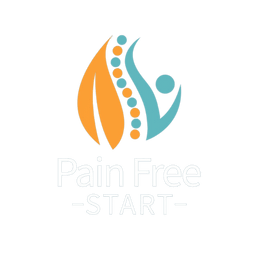What are Hypermobility and Hypermobility Syndrome?
Hypermobility is where some or all of a person’s joints move with ease past the normal range of motion. It is thought to effect 30% of the population. Hypermobility of the joints is caused due to laxity in the tissues surrounding the joints – mainly ligaments and joint capsules.
For most people, hypermobility will be no more than a party trick, but for others, it can have life-changing effects. This is because it is a spectrum with the severity of hypermobility varying greatly from one person to the next. Find out if you are hypermobile.
Hypermobility syndrome occurs in about 10% of the hypermobile population. It is a condition that involves extreme flexibility with the tissues of the body creating pain and other symptoms. It tends to run in families and is more common in children, women, and people of Afro-Caribbean and Asian descent. Children are naturally more flexible and often will become less hypermobile as they get older. This is due to their connective tissues still developing.
Symptoms of Hypermobility Syndrome.
So there is a lot more to this than just being flexible – unfortunately. It can have an impact not just on the joints but on other parts of the body as well. You might be surprised by the list of the common symptoms below, I know I was. I have, in the last few years had a lot of experience with people with Ehlers-Danlos Syndrome (EDS) – a genetic hypermobility syndrome that has very unusual symptoms related to it. What is apparent as a practitioner working with these patients is how much their symptoms vary, with no two people being the same.
Symptoms can include;
- Joint instability, sprains, strains, dislocations, subluxations, and hyper-extension.
- Bladder and bowel problems.
- Poor proprioception and balance.
- Digestive and stomach problems.
- Dizziness, fainting, difficulty controlling temperature.
- Long-term (chronic) pain
- Stretchy skin
- Bruise easily
- Slow healing
- Chronic fatigue
Treatment
Unfortunately, there is no cure for hypermobility syndrome. Symptoms vary widely between individuals not just with type but with severity. So treatment looks to manage individual symptoms. Physiotherapy is recommended by the NHS and NICE (National Institute for Clinical Excellence) for the treatment and management of hypermobility.
Physiotherapy and hypermobility
As a Physiotherapist I see many hypermobile people, most don’t even realise they have it. However, on assessment, it becomes apparent that they are more mobile than most. They don’t tend to come into the clinic seeking treatment for their ‘hypermobility’ but with the pain and injuries associated with it. As well as being more at risk of injury they are also more likely to sustain more severe injuries. The key to reducing pain and reducing the risk of injury is strength, good posture, and proprioception/balance.
Muscle strength
If you work to build strength and control, especially in your core stability muscles then your body and joints will be better supported. You will also be able to move with greater ease and less pain. Because hypermobile individuals have more movement than most they need more strength to control this movement.
Balance and proprioception
By improving your balance and proprioception, you reduce the chance of moving into extreme positions leading to strain and injury. The ankle is a perfect example of this and poor balance and proprioception increase the risk of sprains, strains, and fracture dislocations.
Posture
Posture is a problem for most of us and something that we need to be mindful of. However, if you are someone who has more movement than most this means that you can get into even more extreme postures than others. Poor posture puts greater pressure on the joints and body which in turn can lead to pain and injury. So awareness of your posture is more important for you than the less mobile population.
What can you do about it?
-Physiotherapy is recommended in the NICE guideline.
-Medication for specific symptoms,
-Bracing for very unstable joints.
-Surgery may help for joints that recurrently dislocate.
Start making positive changes today
It’s not all doom and gloom, the key is to be proactive.
Physiotherapy can help to identify and then treat any specific issues that need improving. Focusing on strength, posture, balance, and control. By working to build a strong, dependable body you can reduce your pain and reduce your risk of further injury.
Take a look at my Pain Free Body Exercise Program. It is an in-depth 2-stage program, stage 1 takes you through a full biomechanical assessment to identify any problem areas. Stage 2 is designed to address these I lead you through an exercise-based program building strength, control, and good posture all the elements essential to functioning well when you are hypermobile.
Take a look at my FREE posture Program which takes just 35 mins! Or my FREE posture booklet for exercises and tips. Enrol now and start making improvements to your posture today.
Lifestyle modification.
Some simple changes can make a big difference, try some of these ideas;
- Typing instead of writing can reduce pressure on joints.
- Opt for lower-impact exercises such as cross-training instead of running.
- Sitting if standing is painful.
- Innersoles to support mobile feet.
- Practice good posture to reduce strain on joints.
- Use a trolley rather than carrying a heavy basket.
- A good workstation/desk setup will reduce strain through joints.
Summary
Hypermobility can have a much bigger impact on your body than most first think.
However, there are lots of things that you can do to help reduce your pain and symptoms, prevent injury and live a full life. Get started with some of the ideas discussed and begin your Pain Free START
Take care, Helen
Helen Manders, BSc (Hons) Physiotherapy, MCSP, HCPC.
Chartered Physiotherapist Since 2001.



